More Holyrood taxes come at a cost
- Published
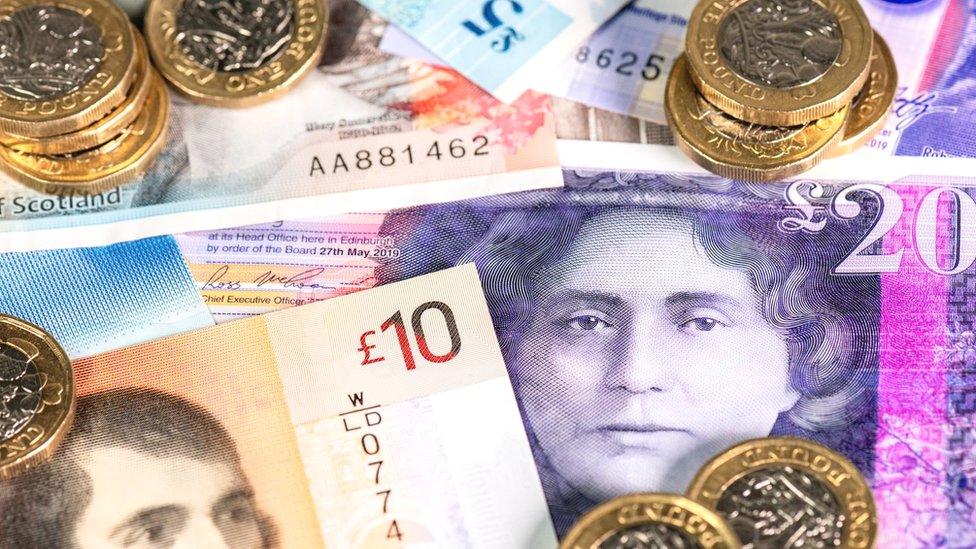
Tax choices are not easy, they come with costs as well as revenue, while they make Holyrood into a more mature and balanced parliament.
The junction at which people start to pay higher rate tax, just below £44,000, is where tax becomes not only higher but more complex, and where Holyrood diverges most from Westminster.
The Scottish Fiscal Commission has found a high level of "behavioural effects", which knock out much of the initial gain from higher tax rates. It has also set out a grim picture of the economy - entering a long, shallow recession, and recovering weakly.
There are benefits from putting up taxes, but none of them cost-free. On the upside, John Swinney is raising £129m next year, mainly from higher earners.
Also on the upside, the Scottish Parliament is moving beyond the experimental phase of fiddling with its new tax powers. Budget day used to be all about how to spend money. This year's budget is at least as much about how to secure the tax revenue necessary.
That makes for a more balanced and mature politics than we used to see.
Finding another £129m is not that much in a budget of £45bn, and a long way behind the £918m set to be raised from the effects of inflation. But the way it is funded adds to a developing trend of divergence from the UK's income tax regime.
The Scottish Fiscal Commission tells us that the tax take next year is set to be £1bn more than it would have been without devolution of income tax. That is on course to rise above £1.5bn within five years.
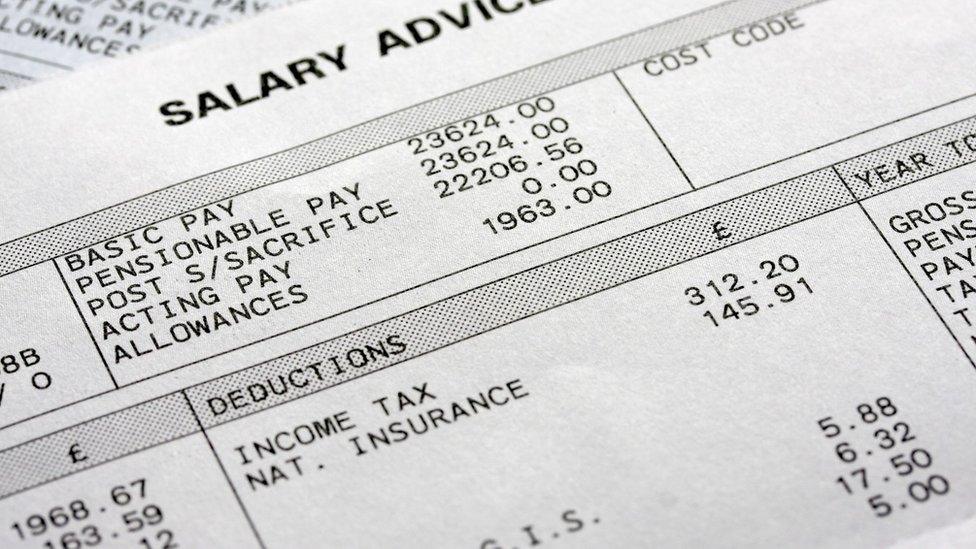
A lot of the increase comes from freezing thresholds for different rates of tax. While earners seek pay increases to meet at least some of their additional costs due to inflation, the tax on that delivers more money into the Scottish government kitty. And as more people move into the higher tax bands, a lot more revenue is raised. That is known as fiscal drag or a stealth tax.
Take a look at individual earner level: for those earning above £43,662, each additional pound earned has 42p deducted in Scotland. In the rest of the UK, that deduction is 20p, and so it continues up to £50,270 where the marginal tax rate rises to 40p.
Also, over that tranche of earnings, National Insurance Contributions, which are linked to rest-of-the-UK thresholds, continue to be deducted at 12p in the pound, before falling to 2p. So the combined deduction from each pound earned at that level in Scotland is 54p, and 32p elsewhere.
So if your earnings are at that higher rate threshold just below £44,000, you are £158 worse off in tax take in Scotland compared with the rest of the UK. If your pay goes up to £50,000, that gap with Westminster will have gone up to £1,558. For a GP on £100,000 a year, the Scottish income tax bill tops £30,000, and is £2,606 more than it would be for the same earnings in England or Wales.
Stealth and drag
How many are caught in that wider net of higher tax? The SFC estimates a rise from 11.6% of taxpayers in 2016 to 18.4% next year - nearly one in five. That is no longer an earnings elite.
Looked at another way, by only slightly increasing the threshold for higher rate tax in Scotland since 2016, there has been a 23% growth in the numbers paying it, while raising the threshold in the rest of the UK has led to a drop of 10%.
It goes on to say that the newly announced change in policy would raise an extra £128m, but only if no-one changed their tax arrangements to avoid it - for instance, by taking income as dividends, which are taxed by the UK Treasury. Once "behavioural effects" kick in, then SFC estimates revenue falls from £128m to £92m.
There's a more pronounced effect for those earning above £125,000. They face a move from 41p in each extra pound to 47p. The SFC says the change of threshold should bring in £33m if no-one's tax affairs were changed. But once they are, that revenue falls to only £8m.
Raising the tax paid by these highest earners would raise £33m next year, but it's forecast to bring in only £3m.
At the basic level of tax, the effect of fiscal drag is much lower. As people move past its £14,332 lower threshold, the amount of tax paid is expected to rise £20m. There will be a smaller behavioural change, some of it from people working fewer hours, and the forecast is down only £1m to £19m.
Income tax strands
Divergence should come as no surprise. However the income tax powers were used after being devolved, the point was to use them differently, or perhaps to make a positive choice to leave them unchanged.
In the five years since income tax was devolved, Scottish government ministers began by re-shaping income tax into five strands instead of three, one of which means that the lower paid people are £20 better off in Scotland than they would be in the rest of the UK. That helps make a political point, but makes little difference to public finances.
The majority remain no worse off than they would be south of the border on the same pay, but the changes were calibrated to ensure that above-average full time earnings in Scotland come with higher tax bills. In 2023-24, the point at which earners in Scotland start to pay more tax than the person earning the same salary elsewhere is £27,850.
That is seen as progressive, in that the higher burden falls on those who are best equipped to pay. And it helps pay for more generous public services.
At least in the free provision of student tuition, dental and eye checks, and more generous long-term care packages, there are obvious pay-backs from paying higher tax.
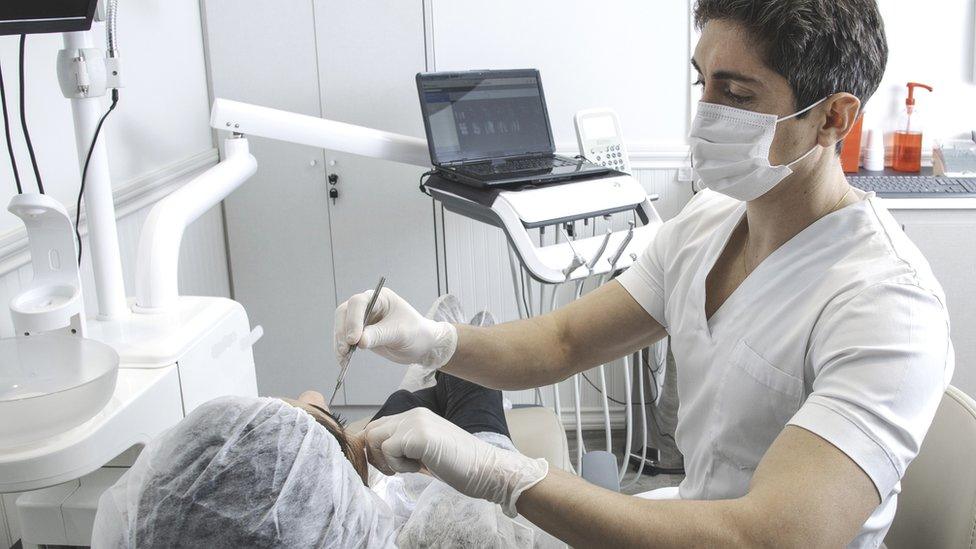
An uplift in the quality of service is more debatable, as Scotland has long had more inputs per head into schools and the health service.
What is changing fastest in the Scottish budget is the amount going into social security benefits. These are being gradually devolved. Cold weather payments are the latest to move to Holyrood, meaning a £50 flat fee per winter, rather than qualifying through temperature drops over a sustained period.

That is expected to cost more than twice as much as it did before. With the intention of prioritising dignity and fairness in allocating welfare payments, and with entirely new benefits being created, such as the Scottish Child Payment, it is a more generous system.
The Treasury provides Holyrood with the funds that would have been allocated to Scots if none of this budget were devolved.
The SFC reckons that the Scottish government is having to raid other budgets this year for £400m to have a more generous system, rising to £800m next year, and to £1.4bn within five years.
Choice cuts
It is, emphasises John Swinney, about choices. Some choices were forced on him: to delay delivery of government projects, though he did little to spell out which ones: a choice not to set a pay policy for next financial year, when it could inflame the unresolved disputes over pay in the current year.
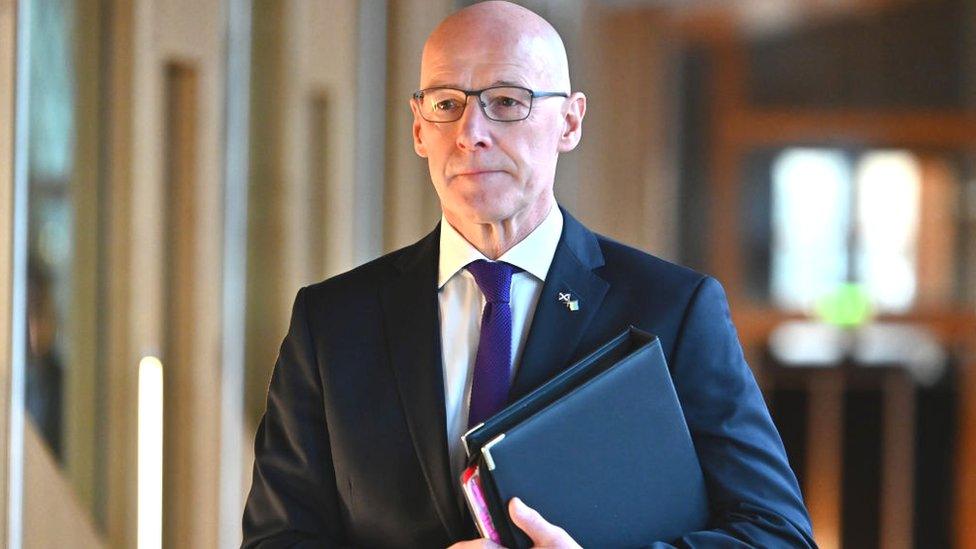
John Swinney presented his budget on Thursday
The choices made on tax come with downsides or at least risks.
One is that raising tax in a recession sucks money out of consumer spending and hurts business revenue and economic growth.
A counter-argument to that is that the same pounds put into the pay of a public sector worker or someone on benefits may be more likely to be spent in the economy. If it is a direct transfer, it can be efficient. Lots of other government spending may be less so.
Different decisions
The other risk is that these 'behavioural effects' become more significant. We don't know the point at which people decide that Scotland's taxes are too high and they choose to leave, because every such decision is different, and often influenced by other factors.
Even at a high salary of £100,000, the gap between tax paid in Scotland and the bill in England is unlikely, on its own, to make it worthwhile for someone to sell their home and move out of Scotland.
But there is a perception issue for a country that aspires to attract people in, to fill vacancies in its health service, to work in senior positions at its universities, to start up businesses, or to build up tech companies with high-earning employees.
They don't have to make a calculation of how much higher tax might be. A perception of a country that levies higher tax, and is on a course of continuing to diverge in that direction, while not having much growth, may be a less attractive one for an internationally mobile high-value worker.
Or it may have the makings of a 'social contract' - one of John Swinney's favourite phrases on budget day - which potential immigrants find attractive.
Either way, both the UK and Scotland seem to be on a journey towards resolving the tensions of wanting Scandinavian level services with American-level tax.
Unprecedented fall
Conservatives at Westminster are offering a big state for now, though some hanker for a much smaller one.
Scotland is moving faster towards the Scandi choice. But it will require a much more efficiently productive economy, breaking out of chronic low growth that will deliver on that vision.
The SFC report on the state of the economy was grim: unemployment forecast to rise to 4.7%, though from a low base, now at 3.3%; house prices falling by more than 5% and not fully recovering over five years; a recession through next year, which doesn't look as bad as the Bank of England forecast.
And while it may be shallow, recovery is forecast to be weak - recovering to pre-recession output at the start of 2025, and not getting back to pre-Covid levels of late 2019 until the third quarter of 2025.
By 2026, when growth might reach 2%, the SFC indicates that we may be facing a new challenge of deflating prices.
After last decade's exceptionally weak recovery from the financial crash, this decade looks grim as well, in growth of the economy, and in an unprecedented fall in disposable household income.
Without faster growth, meeting high expectations of public services will require higher and higher levels of tax.
- Published15 December 2022
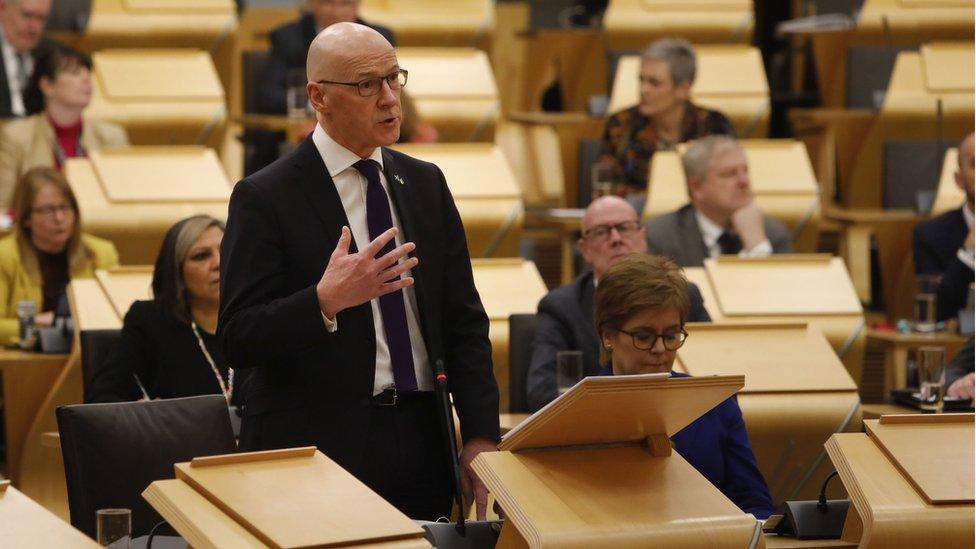
- Published15 December 2022
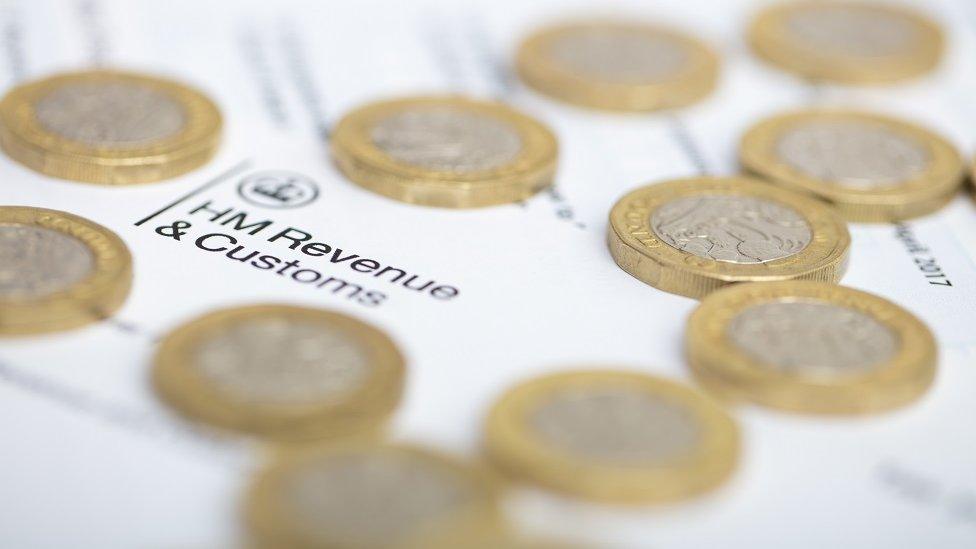
- Published15 December 2022

